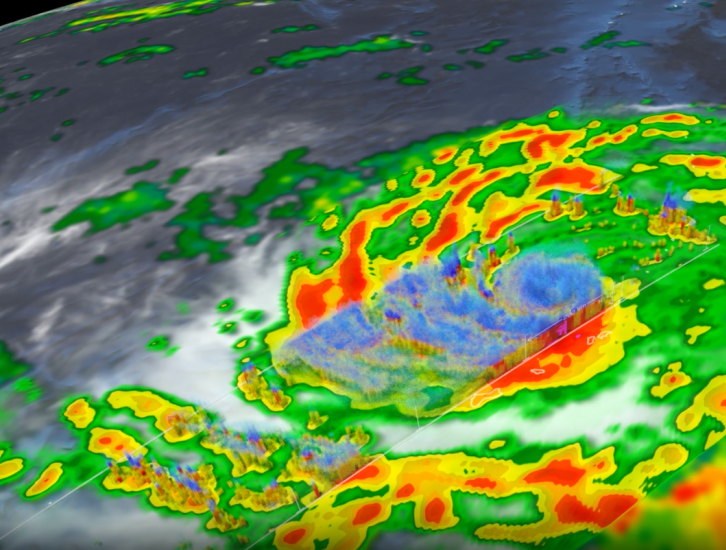
GPM Views Typhoon Bolaven
Typhoon Bolaven began as a tropical depression over the West Pacific Ocean on Oct. 7, 2023. On Oct. 10, Bolaven became a Typhoon and passed over the Mariana Islands as it tracked to the northwest. Bolaven then rapidly intensified over 12 hours from a Category 1 to a Category 5 storm on the Saffir-Simpson scale, starting around 12 UTC on Oct. 10. Several factors contributed to the rapid intensification, including modest shear in the atmosphere and warm sea-surface temperatures.
This animation shows precipitation within Typhoon Bolaven around the time that rapid intensification began. The global view at the beginning of the animation shows precipitation rate estimates from NASA’s IMERG multi-satellite data product starting at 1241 UTC on Oct. 9. The 3D view shown during the rest of the animation visualizes data collected by the Dual-Frequency Precipitation Radar (DPR) onboard the NASA/JAXA Global Precipitation Measurement (GPM) Core Observatory satellite when it flew over the storm at 1311 UTC on Oct. 10. In the visualization, yellow, red, and pink colors indicate rainfall within the storm at lower altitudes, while blue and purple colors indicate frozen precipitation located higher in the atmosphere. The DPR also detected a 20 dBZ radar reflectivity signal above 14.5 km altitude indicating a hot tower in the eyewall of Typhoon Bolaven. Hot towers are associated with hurricane intensification.
Fortunately, Bolaven's rapid intensification began after it passed near Guam and the Northern Mariana Islands. As of Oct. 12, weather models predict that Bolaven will remain over the Pacific Ocean while curving to the northeast.
Credits:
Visualization by Alex Kekesi (NASA GSFC / GST) and the NASA Goddard Scientific Visualization Studio using GPM data.
Text by Owen Kelley (NASA GSFC, PPS, GMU) and Jason West (NASA GSFC, PPS, KBR)

